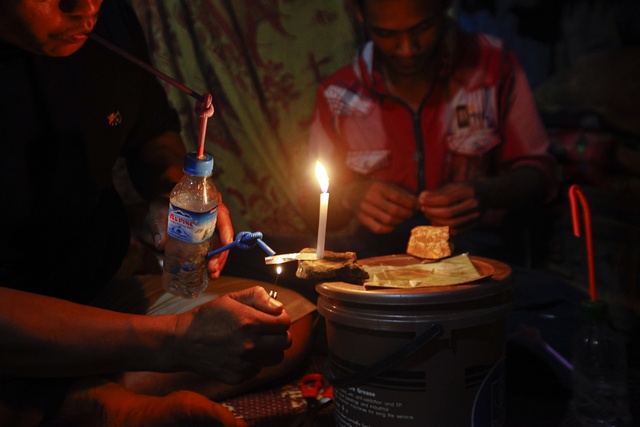In Burma, it’s hard for underground bands to break into the music industry. Few people have Internet access, and producers are reluctant to promote them if they’re uncertain of success.
But after living with censorship for 60 years, many young people are now forming music groups and are expressing their opinions at the political and economic situation in the country.
Zaw Htet went to hang out with a few underground bands that are trying to break into the Burma music industry.
Fever 109 is a metal band that was formed 5 years ago by a group of friends. They meet regularly in their studio to play but want to make it big so they can work full time doing what they love.
”To set up a group is not easy, it takes a lot of time”, said guitarist Si Thu. “Money is the biggest problem. We need someone who can help arrange the shows.”
He thinks there should be organised music shows every three or four months. That way the underground bands would get promoted and the audience would grow.
The hard work has paid off and Fever 109 are finally about to produce their debut album.
“We hope to produce the album this year”, said vocalist Adino. “But it is late for many reasons. We eat and drink together here and have so much fun, that’s why it took time. Just kidding, we will try to get it out next year.”
[related]
Alternative bands have trouble getting signed in Burma. Mainstream pop music is more in demand and therefore more profitable.
“Producers will look for profit. They choose the music that will be popular. So we need a producer that loves our kind of music”, said Si Thu.
Another problem is the market is flooded with illegal pirated CDs. As soon as a new song is released, illegal copies pop up everywhere – and it’s the musicians who miss out on the profit.
According to Si Thu, the pirated copies put off the producers from working with unknown bands since they don’t think they will make any profit. At the same time, some bands suspect the producers themselves sell illegal copies of the CD’s they promote to make even more money.
But Fever 109 say they’re not interested in becoming rich and famous – they just want to do what they love – making metal music.
“We like what we do”, said Adino. “If we do what we really like, people will get to know you at some point… I believe that if underground bands work together, we will succeed.
West Coast City is an R&B/hip hop band, also from Rangoon. They’ve just released their debut album, but it took 6 years to get it out.
“We tried to find a producer, but we had no money”, said one of the band members.
“Our colleagues try very hard. But the market here is not very strong yet”, said another.
But despite the struggle, West Coast City’s band members are positive and think the future looks good.
“The main point is to keep trying. You need to keep focused.”
Though it is hard for underground bands to make a profit from their music in Burma, there are now so many more groups emerging. And these eager musicians have high hopes of succeeding.






